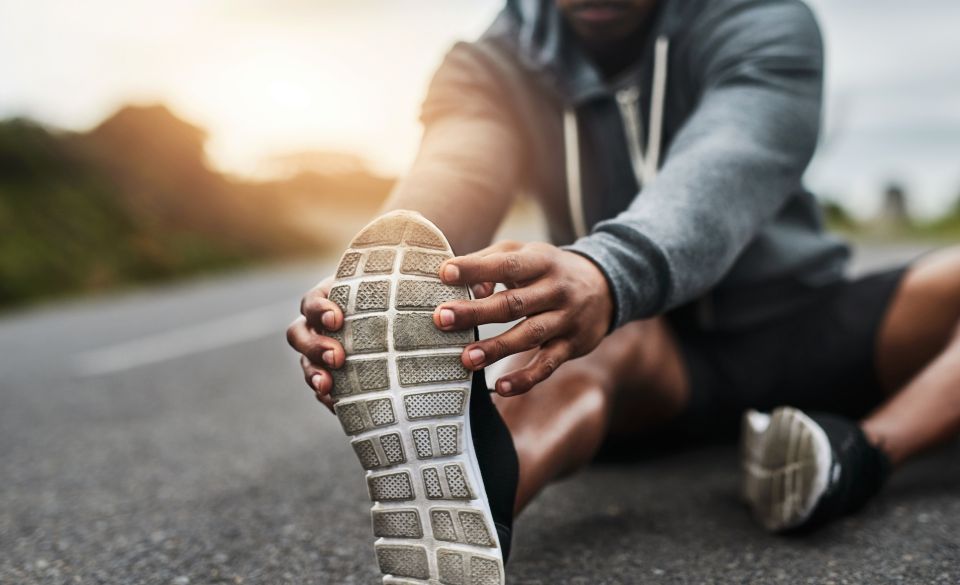
The Best 10 After Running Stretches
Page Contents
Taking the time to properly stretch after running can have dramatic benefits for you and your fitness. Stretching just 10 minutes after running will help to loosen your muscles and reduce the chances of injury. Here are the 10 best after-running stretches to help you stay healthy and active.
Why Stretching After Running Is Important
When it comes to running, the importance of stretching cannot be overlooked. Stretching helps to keep your muscles and connective tissues healthy, protect your joints, and keep them functioning optimally. When running, your muscles and connective tissues become shorter and tighter. Stretching helps to elongate and relax them, allowing them to perform optimally while they’re running.
Stretching before you run helps to make your muscles more pliable and increases the range of motion that the joints will experience, which reduces the stress on them. Stretching also helps to increase blood flow and circulation. This can help to reduce the risk of muscles becoming sore and can help to reduce the risk of injury.
Stretching after you run is just as important, if not more so. It helps to restore your muscles and connective tissues to their original length. This helps to reduce the risk of injury, optimize your range of motion and helps to ease any muscle soreness you may have after a hard run. Additionally, stretching after running helps to bring down your heart rate and increases circulation, which helps your body recover faster and helps you to feel less sore after your runs.
Stretching isn’t just important for runners. It is important for anyone looking to keep their body healthy and functioning properly. Stretching increases flexibility and helps to keep muscles and connective tissues healthy, while also reducing the risk of injury. If you’ve been running and neglecting to stretch afterwards, you may want to start incorporating stretching into your routine. Doing so will help you to stay healthy and injury-free so that you can continue with your running goals.
How Long Should You Stretch After Running
When it comes to post-run stretching, it’s important to ensure you are stretching correctly both in duration and intensity. After running, it’s important to stretch your muscles both dynamically and statically to prevent injury, improve your running performance and speed, and to help with better recovery.
Dynamic stretching, like leg swings and walking lunges, are great for pre-run warmups and light stretching post-run. Take your time with this type of stretching — 10–15 seconds per stretch is a great starting point. With dynamic stretching, the focus should be on gently moving your muscles and joints through their natural range of motion.
Static stretching should be done post-run and is a more effective way to reduce your chance of post-run muscle soreness. This type of stretching is typically held for 15–60 seconds per muscle group. During a static stretch, be sure to focus on the muscle being stretched and not overdoing it.
You should aim to spend between 5–10 minutes stretching after running, depending on your body and the intensity of your run. Some runners may need a little bit longer if they ran faster or further than usual and their muscles need extra attention. Don’t forget to focus on the larger muscle groups, such as the hamstrings, quads, glutes, and calves.
Cool down stretches should be done after every run, and if you can take another 5–8 minutes for a full-body stretch session, do it! This will further increase recovery and help prevent injury.
Overall, the duration and intensity of stretching post-run will depend on numerous factors. Listen to your body and adjust your stretching routine accordingly. And most of all, take it easy and enjoy the benefits of stretching!
The Best 10 After Running Stretches
1. Heel Drop – This simple exercise strengthens the calf muscles, reducing the risk of injury. To do this, stand on one foot and raise your other foot off the ground. Bend your knee and use the non-supporting foot to lift your heel off the floor. Lift as high as you can and then slowly lower it back down, repeat 8-10 times each leg.
2. Extended Squats – This deep exercise targets the quads, helping to reduce the risk of lower-body injuries. Start in a low squat position with your feet shoulder-width apart, then hold for 10 seconds before standing straight up. Repeat this 8-10 times.
3. Quad Stretch – This is an easy exercise and one of the best post running stretches you can do. From a standing position, grab one foot with your hand and pull it towards your rear-end, keeping your back straight throughout. Hold this position for up to 10 seconds and switch to the other side and repeat 8-10 times.
4. Glute Stretch – This stretch helps to loosen tight glute muscles, reduce soreness, and prevent injury. Lie on your stomach with your hips and knees bent. Keeping your back straight, move the top knee towards your chest until you feel the stretch in your glute muscles. Hold for 8-10 seconds, and repeat with the other leg.
5. Calf Stretch – The calves are important muscles to stretch after running. Stand with one foot slightly in front of the other, then bend your back knee as you lean forward. Place your hands on the wall for support and hold for 8-10 seconds, then switch legs and repeat.
6. Hamstring Stretch – Hamstrings are commonly strained during running, making this stretch of the utmost importance. From a standing position, keep your back straight and lean forward, reaching for your toes. Hold for 8-10 seconds and repeat 8-10 times.
7. IT Band Stretch – Runners are also prone to IT band pain, so stretching the IT band regularly can help prevent injury. Lie on one side with your upper leg bent and the lower leg extended. Slowly lift the lower leg until it’s perpendicular to the upper leg and hold this position for 8-10 seconds. Repeat with the other side.
8. Piriformis Stretch – This stretch helps to reduce tightness in the glutes and hip flexors. Position your ankle just above the opposite knee, and then slowly lower your knee towards your chest until you feel a stretch. Hold this position for 8-10 seconds before switching sides.
9. Upper Back Stretch – After running, the shoulders can become tense and tight. This simple stretch can help reduce that feeling. Sit up straight on the floor and twine your hands together behind your back. Hold for 8-10 seconds and then release.
10. Hip Flexor Stretch – Hip flexors are important for walking and running, so make sure to stretch them after a run. Kneel on one knee with the other leg bent in front of you. Push your hips forward until you feel the stretch in your hip flexor and hold this position for 8-10 seconds. Switch sides and repeat.
Stretching is an important part of any runner’s routine. Incorporating these 10 after-running stretches can help you stay healthy and injury-free. Taking just 10 minutes out of your day to stretch can pay off dividends in the long run.


